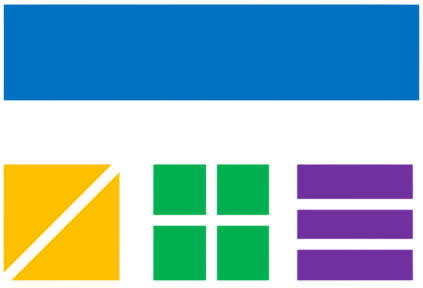Roth IRA Calculator Information
What is a Roth IRA Calculator?
Roth IRA Calculator helps you estimate your retirement savings growth with tax-free Roth IRA accounts. Enter your current balance, contribution amounts, and other details to see your projected retirement savings. This tool is ideal for anyone planning for retirement through a Roth IRA and wanting to understand the power of tax-free growth.
How Roth IRAs Work
A Roth IRA is an individual retirement account that offers tax-free growth and tax-free withdrawals in retirement. Unlike traditional IRAs, Roth IRAs use after-tax contributions but provide significant tax advantages in retirement:
- After-Tax Contributions: You contribute money that has already been taxed
- Tax-Free Growth: Investment earnings grow without being taxed
- Tax-Free Withdrawals: Qualified withdrawals in retirement are completely tax-free
- No RMDs: Unlike traditional IRAs, no required minimum distributions at age 72
- Flexible Withdrawals: You can withdraw contributions at any time without penalty
- Estate Planning Benefits: Roth IRAs can be passed to heirs tax-free
How Roth IRA Growth Is Calculated
Roth IRA growth uses compound interest with regular contributions. The formula for future value with regular contributions is:
- FV = Future value of your Roth IRA
- P = Initial balance in your account
- r = Annual return rate (as a decimal)
- n = Number of years until retirement
- PMT = Annual contribution amount
Example: $5,000 initial, $6,000/year contribution, 7% return, 30 years
Projected Roth IRA Balance: $600,000
Roth IRA vs Traditional IRA
Comparing Roth and Traditional IRAs
Roth IRA Advantages
- Tax-free growth and withdrawals
- No required minimum distributions
- Flexible withdrawal rules
- Ideal for younger investors
- Better for estate planning
- No age limit for contributions
Traditional IRA Advantages
- Immediate tax deduction
- No income limits for contributions
- Tax-deferred growth
- Better for higher current tax brackets
- Lower upfront tax burden
- May qualify for Saver's Credit
Roth IRA Contribution Limits
- 2024 Limit: $7,000 for individuals under 50
- Catch-up Contribution: $1,000 for those 50 and older
- Income Limits: Phase-out begins at $146,000 (single) or $230,000 (married)
- No Contributions: Above $161,000 (single) or $240,000 (married)
- Five-Year Rule: Must wait 5 years before tax-free withdrawals of earnings
- Age Limit: No maximum age for contributions
Tips for Maximizing Your Roth IRA
- Start contributing early to maximize tax-free growth time
- Contribute the maximum amount allowed each year
- Consider your current vs. future tax bracket
- Diversify your retirement accounts (Roth + Traditional)
- Set up automatic contributions for consistency
- Consider a backdoor Roth IRA if you exceed income limits
- Use Roth IRAs for higher-growth investments
- Plan for the five-year rule when making early withdrawals
Roth IRA Withdrawal Rules
Understanding Roth IRA Withdrawals
Qualified Withdrawals (Tax-Free)
- Age 59½ or older
- Account open for 5+ years
- No taxes or penalties
- Can withdraw any amount
Non-Qualified Withdrawals
- Contributions: Always tax and penalty-free
- Earnings: May be taxed and penalized
- Exceptions: First-time home purchase, education, disability
- Five-year rule applies to earnings
Frequently Asked Questions (FAQ)
Q: What are the income limits for Roth IRA contributions?
A: For 2024, phase-out begins at $146,000 for single filers and $230,000 for married filing jointly. No contributions allowed above $161,000 and $240,000 respectively.
Q: Can I withdraw my Roth IRA contributions early?
A: Yes, you can withdraw your contributions at any time without penalty. However, earnings withdrawals before age 59½ may incur taxes and penalties unless an exception applies.
Q: Should I choose Roth or Traditional IRA?
A: Roth is better if you expect to be in a higher tax bracket in retirement. Traditional is better if you're in a high tax bracket now and expect lower taxes in retirement.
Q: What's a backdoor Roth IRA?
A: A strategy for high earners to contribute to a Roth IRA by first contributing to a traditional IRA, then converting it to a Roth IRA. This bypasses income limits.
Q: Do Roth IRAs have required minimum distributions?
A: No, Roth IRAs don't require RMDs during the account owner's lifetime. This makes them excellent for estate planning and legacy purposes.
Important Disclaimers
Disclaimer: This calculator provides estimates for educational purposes only. Actual Roth IRA growth and tax benefits may vary significantly based on investment performance, tax law changes, and personal circumstances.
Always consult with a financial advisor, tax professional, or retirement planning specialist for personalized advice. This calculator does not account for all possible scenarios, tax implications, or recent changes to IRA rules.
Investment returns are not guaranteed and past performance does not guarantee future results. Roth IRA rules and contribution limits are subject to change by Congress.
